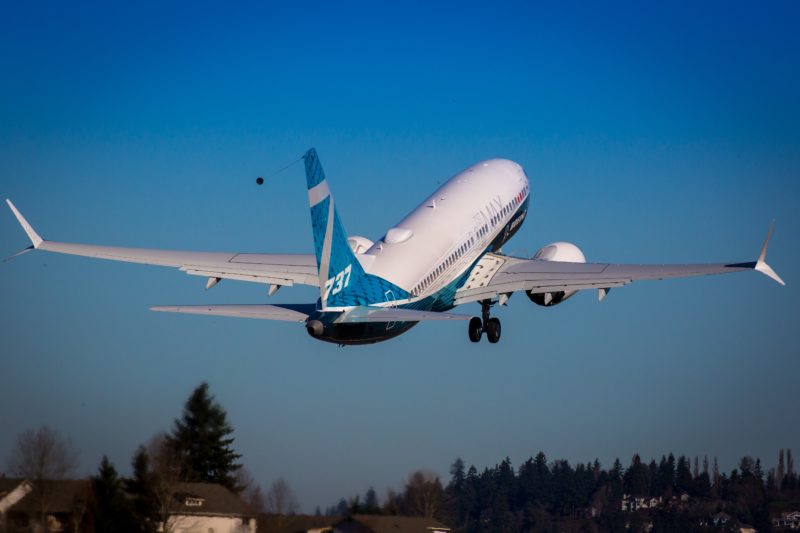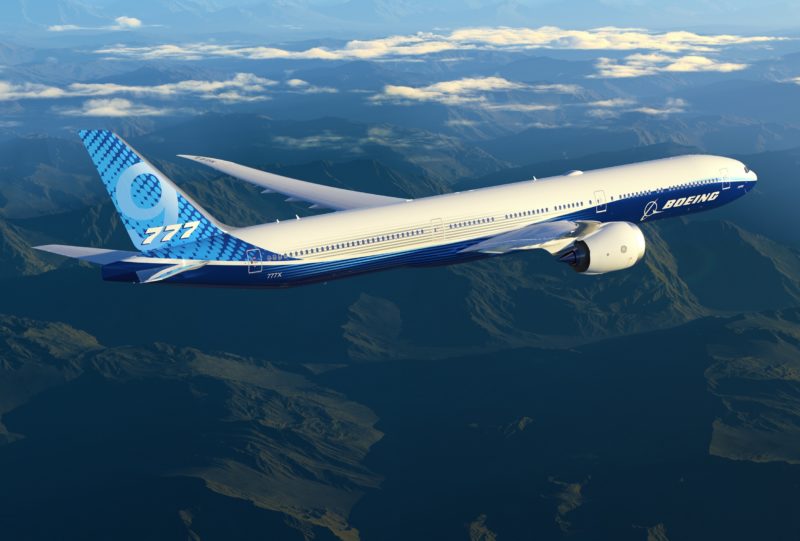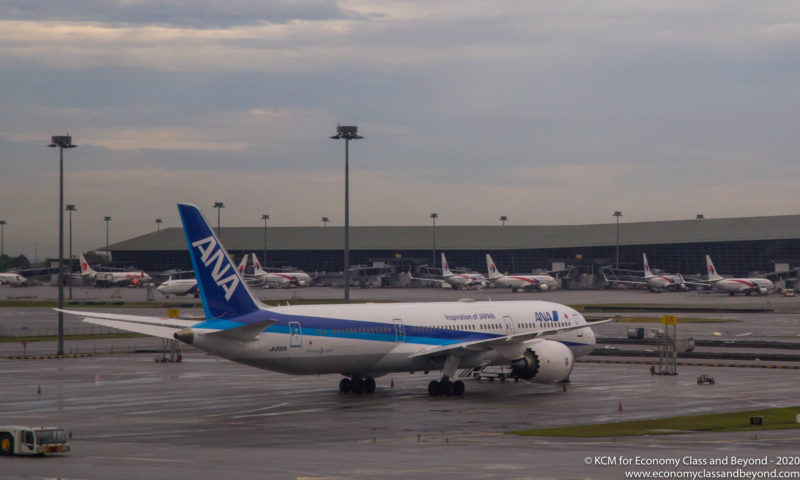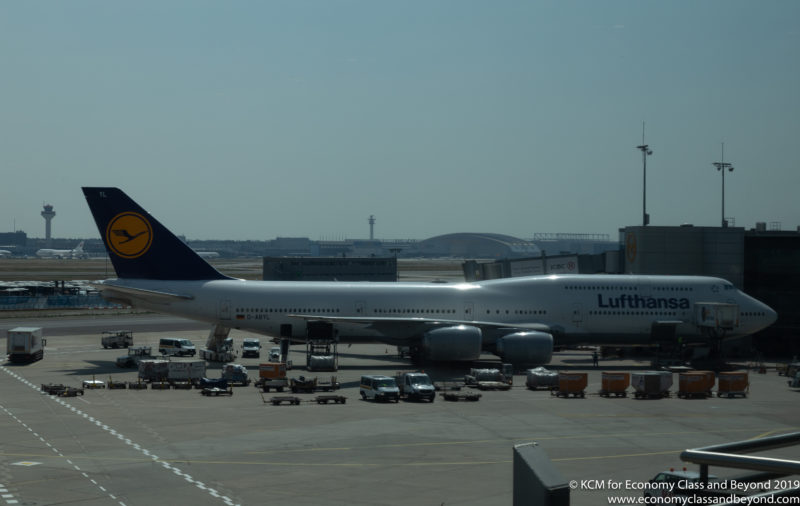Earlier this week, Boeing pushed out several announcements of its production of aircraft. And whilst there’s a lot of noise about the end of Boeing 747 production, there’s a lot more to unpack that just the Queen of the Skies.
Let’s look in a bit deeper.
Boeing 737 MAX Programme
The Boeing 737 MAX Programme is still under scrutiny post FAA testing.

Boeing 737 MAX 7 conducting its first flight – Image, The Boeing Company.
With Boeing hoping the aircraft is recertified by the Autumn, the company is planning a slower ramp-up of production than planned, with a gradual increase to 31 aircraft per month by the beginning of 2022. Early work has commenced on the production of the type by the company.
The company has received more than a few cancellations recently, so there will be order shuffling going on to ensure aircraft can be delivered to customers (both lessors and airlines). However, customers appear to be less than willing to accept deliveries of any aircraft during these times.
In addition, there are a backlog of aircraft sitting at various Boeing sites that will need to be recertified for delivery, as well as those aircraft already delivered that will be needed to brought to the recertification specification.
Boeing 777/777X programme
The combined Boeing 777/Boeing 777X programme is suffering a rate production, with the production rate being reduced to two per month in 2021 (from the current five aircraft). In turn, the Boeing 777X first delivery has been delayed. Originally, first delivery was due in 2021. This has been pushed back to 2022.

Boeing 777-9 First Flight – Image, The Boeing Company.
The Boeing 777X programme has been delayed for some time due to issues with the GE-9X engine design, with the first flight of the aircraft on the 25th January 2020. Currently, two aircraft are involved in the test programme.
Boeing 787 Programme

All Nippon Airways Boeing 787-9 at KLIA – Image, Economy Class and Beyond.
Whilst the headline number of production of the type being reduced to six aircraft per month in 2021 is worrying, that isn’t the biggest headline here – rather it is what Boeing describes as
With this lower rate profile, we will also need to evaluate the most efficient way to produce the 787, including studying the feasibility of consolidating production in one location.
Boeing currently assembles its 787 aircraft at two sites – at Everett in Washington state (where the 787-8/787-9 are assembled) and at Charleston, South Carolina (where all three variants of the type – 787-8/787-9/787-10 are assembled).
The Air Current goes into a much deeper dive on why Boeing may move away from Washington State for the 787.
Boeing 767 Programme
Production of the Boeing 767 is expected to continue as is – the last reported rates were three aircraft a month, for both cargo and military customers.
Boeing 747 programme
With the order book for the Boeing 747-8 programme continuing to be very empty, Boeing is keeping the production rates unchanged at 0.5 aircraft a month. This will mean that production of the Boeing 747 will be completed in 2022, closing a design and production chapter that has lasted in various forms since 1965.

Lufthansa Boeing 747-8i at Frankfurt Airport – Image, Economy Class and Beyond.
By the end of production, a total of 154 Boeing 747-8 aircraft (107 for the 747-8F freighter, 47 for the 747-8i passenger version), with a total of 137 delivered at the end of 2019.
Whilst production would had ended, Boeing will continue to support 747 operations and sustainment into the future.
Further Workforce cuts
With a reduced output, a need for a reduced workforce is sadly required.
the company previously announced a net 10% workforce reduction in 2020 through a combination of voluntary layoffs, attrition and involuntary layoffs. Further layoffs in the offering with the lower production rates and demand for commercial services.
How this will translate into Boeing staff on the ground will be important.
In Quotes
Boeing President and Chief Executive Officer Dave Calhoun said
“We remained focused on the health of our employees and communities while proactively taking action to navigate the unprecedented commercial market impacts from the COVID-19 pandemic,”
“We’re working closely with our customers, suppliers and global partners to manage the challenges to our industry, bridge to recovery and rebuild to be stronger on the other side.”
He added
“The diversity of our balanced portfolio and our government services, defense and space programs provide some critical stability for us in the near-term as we take tough but necessary steps to adapt for new market realities,”
“We are taking the right action to ensure we’re well positioned for the future by strengthening our culture, improving transparency, rebuilding trust and transforming our business to become a better, more sustainable Boeing. Air travel has always proven to be resilient – and so has Boeing.”
And further issues down the supply chain
With Boeing reducing output further, the pain will not only be felt by the company, but also its suppliers and partners – from large fuselages, to engines, to seats, right down to the rivets and carbon fibre – it has an impact on everyone in the supply chain.
And this pain will last for a long time sadly – until the market begins to recover.
Welcome to Economy Class and Beyond – Your no-nonsense guide to network news, honest reviews, with in-depth coverage, unique research as well as the humour and madness as I only know how to deliver.
Follow me on Twitter at @EconomyBeyond for the latest updates! You can follow me on Instagram too!
Also remember that as well as being part of BoardingArea, we’re also part of BoardingArea.eu, delivering frequent flyer news, miles and points to the European reader.